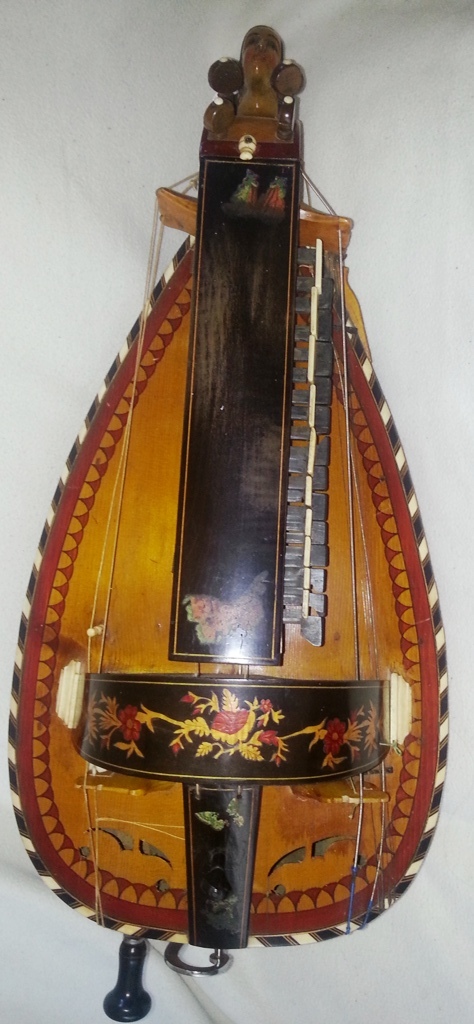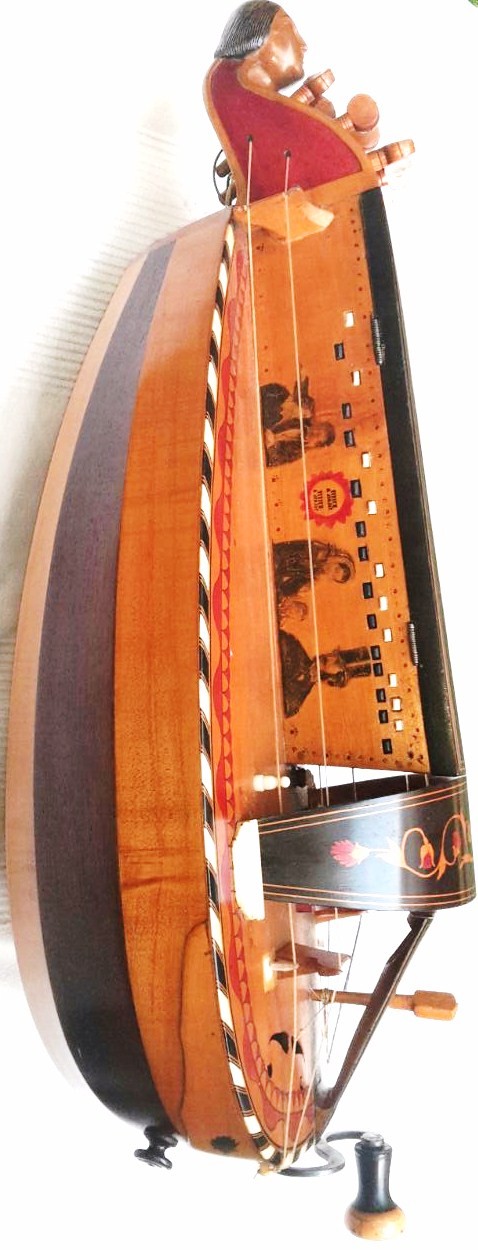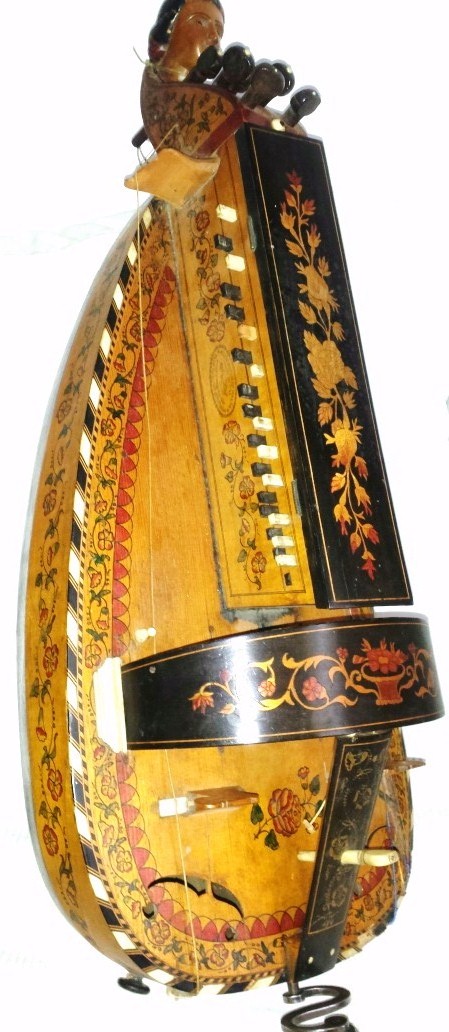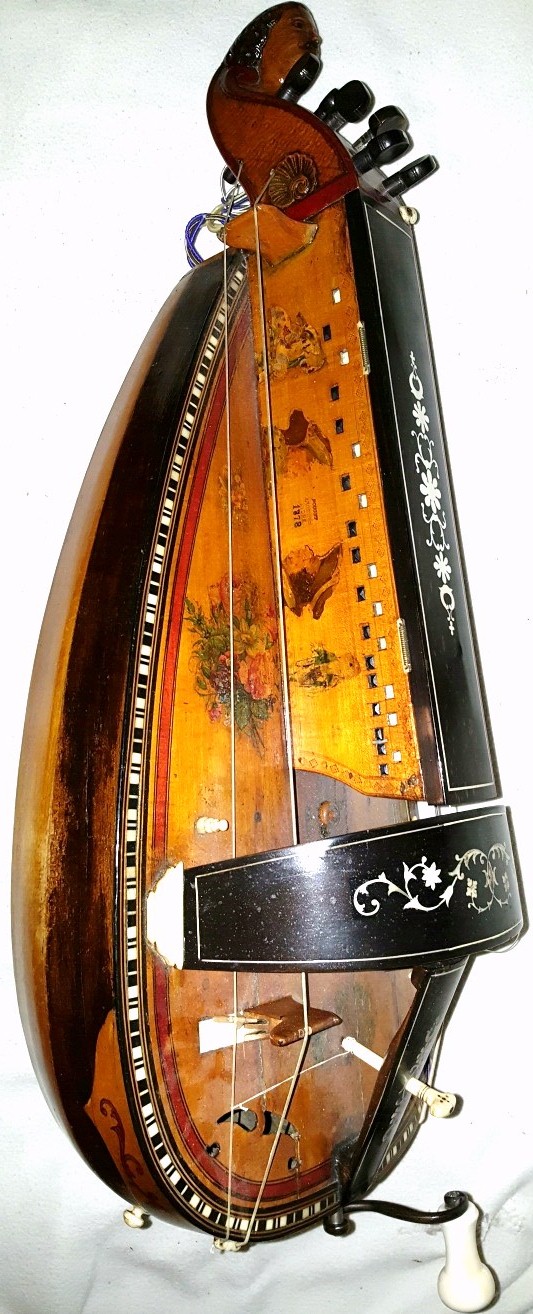Old Musical Instruments
Buying-Selling Early Musical Instruments
William Petit wpetit@sfr.fr Tel 00 33 6 13 12 43 22
Appraisal
Saxophones Selmer
Saxophones Adolphe Sax
Flûtes
Woodwind
Brasswind
Mandolins
Strings
Violin-Viola d'Amore-Quinton
Miscellaneous
Lyre Guitars Francois Roudhloff (1781-1849), Mauchand...
The Lyre-Guitar was a type of guitar shaped like a lyre.
Invented in 1780 by Pierre Charles Mareschal, a prominent French luthier, it had six single courses and was tuned like the modern classical guitar, with a fretboard located between two curved arms recalling the shape of the ancient Greek lyre.
She nearly always had a built-in pedestal allowing it to stand upright when not in use.
The Lyre-Guitar enjoyed great popularity as a salon instrument especially in Paris between 1780 and 1820.
It became very much in vogue and pervaded the highest levels of society; Marie Antoinette played one and the great guitarists of the day such as Ferdinando Carulli, Fernando Sor, Matteo Carcassi, Mauro Giuliani and Pierre Jean Porro wrote music and methods for it.
The pricipal maker are Mougnet, de Lyon Levien Ventura London, Francois Roudhloff, Mauchand Paris Mirecourt.
Harp Guitars Levien London, François Roudhloff Paris...
The Harp Guitar or harp-guitar is a guitar-based stringed instrument with a history of well over two centuries.
While there are several unrelated historical stringed instruments that have been referred to as
"harp-guitar" over the centuries, its most common definition is a "guitar, in any of its accepted forms, with any number of additional unstopped strings that can accommodate individual plucking."
The word "harp" is used in reference to its harp-like unstopped open strings.
A harp guitar must have at least one unfretted string lying off the main fretboard, typically played as an open string.
This family consists of many varieties of instrument configurations.
Most readily identified are American harp guitars with either hollow arms, double necks or harp-like frames for supporting extra bass strings, and European bass guitars or contraguitars.
Other harp guitars feature treble or mid-range floating strings, or various combinations of multiple floating string banks along with a standard guitar neck.
Hurdy Gurdy Pimpart, Colson, Tixier, Pajot, Nigout, Decante et Caille, à Jenzat, Guersan, Lambert, Louvet, Varquain and Salomon...
The Hurdy-Gurdy is a stringed instrument that produces sound by a crank-turned, rosined wheel rubbing against the strings.
The wheel functions much like a violin bow, and single notes played on the instrument sound similar to those of a violin. Melodies are played on a keyboard that presses tangents - small wedges, typically made of wood - against one or more of the strings to change their pitch.
Like most other acoustic stringed instruments, it has a sound board to make the vibration of the strings audible.
Most hurdy-gurdies have multiple drone strings, which give a constant pitch accompaniment to the melody, resulting in a sound similar to that of bagpipes.
For this reason, the hurdy-gurdy is often used interchangeably or along with bagpipes, particularly in Occitan, Catalan, Sardinian, Cajun French and contemporary Galician and Hungarian folk music.
The new musical instruments are on my new website https://www.instruments-anciens.com/nouveautes
Website available on all devices :smartphones, tablets... Both websites are still online
|
|
|
|
|
|
Hurdy Gurdy Pimpard Jenzat Sold |
Hurdy Gurdy Tixier à Jenzat Sold
|
Hurdy Gurdy Tixier à Jenzat Sold
|
Hurdy-Gurdy by Pouget
|



